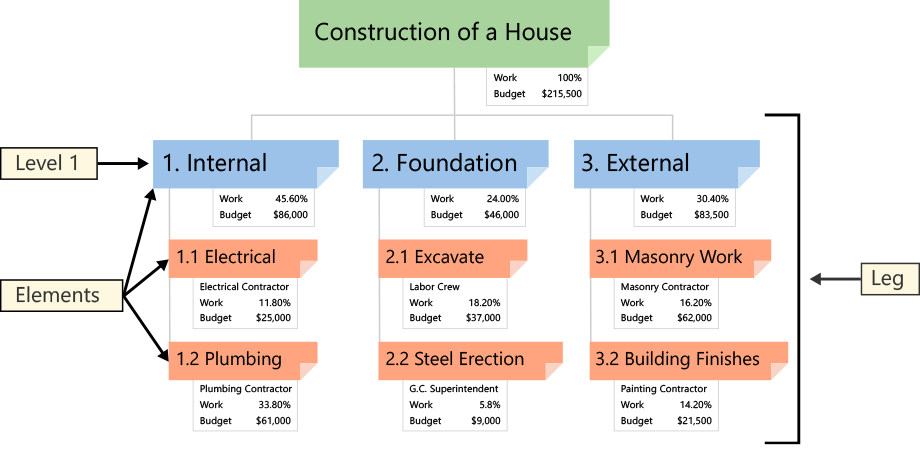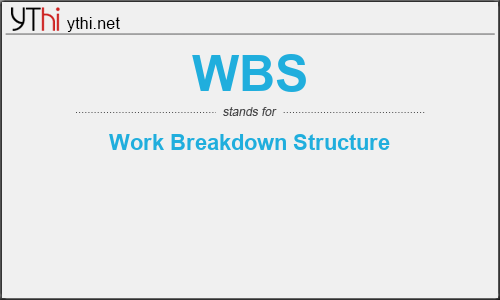What does WBS mean? What is the full form of WBS?
The full form of WBS is Work Breakdown Structure.
Breaking work into smaller tasks is a common productivity technique used to make the work more manageable and approachable. For projects, the Work Breakdown Structure (WBS) is the tool that utilizes this technique and is one of the most important project management documents. It singlehandedly integrates scope, cost and schedule baselines ensuring that project plans are in alignment.
The Project Management Institute (PMI) Project Management Book of Knowledge (PMBOK) defines the Work Breakdown Structure as a “deliverable oriented hierarchical decomposition of the work to be executed by the project team.” There are two types of WBS: 1) Deliverable-Based and 2) Phase-Based. The most common and preferred approach is the Deliverable-Based approach. The main difference between the two approaches are the Elements identified in the first Level of the WBS.
A Deliverable-Based Work Breakdown Structure clearly demonstrates the relationship between the project deliverables (i.e., products, services or results) and the scope (i.e., work to be executed). Figure 1 is an example of a Deliverable-Based WBS for building a house. Figure 2 is an example of a Phase-Based WBS for the same project.

deliverable-based-wbs
In Figure 1, the Level 1 Elements are summary deliverable descriptions. The Level 2 Elements in each Leg of the WBS are all the unique deliverables required to create the respective Level 1 deliverable.
WBS
means
Work Breakdown Structure![]()
Translate Work Breakdown Structure to other language.


Leave a Reply
You must be logged in to post a comment.